- Home
- Ian Doescher
William Shakespeare's Alack! of the Clones Page 13
William Shakespeare's Alack! of the Clones Read online
Page 13
DOOKU
This is but the beginning, Yoda, aye—
Your love of others shall be your undoing!
[Count Dooku uses the Force to knock one of the hangar’s columns onto Obi-Wan and Anakin.
OBI-WAN
Alas, this is the end—the rocks and things
That Dooku threw toward him once before
Are nothing next to this vast pillar. O,
My spirit, be prepar’d to meet thy death!
YODA
Enormous it is
Only if with eyes I look;
The Force better sees.
[Exit Count Dooku as Yoda uses the Force to catch the column and throw it aside.
OBI-WAN
Immense authority in one so small,
I ne’er would have believ’d it possible.
My life he spares to live another day—
He shall not yet see Obi-Wan as ghost.
YODA
[aside:] Now worse matters are,
This grim pow’r a threat portends:
Dark from dark shall come.
Enter PADMÉ with a battalion of CLONE TROOPERS.
PADMÉ
O, Anakin, how art thou sore abus’d!
ANAKIN
My Padmé sweet, thou art alive and well,
And I am thine, though by the dark side us’d.
PADMÉ
Together we shall journey through this hell.
OBI-WAN
[aside to Yoda:] These protestations of affection ring
Most dissonantly on mine ears, and yet
They hold no great surprise. Mayhap we were
Unwise to let these two become so close.
YODA
’Tis he must decide—
His love or the Jedi path—
A choice he now hath.
[Exeunt.
SCENE 4.
On the planet Coruscant.
Enter DARTH SIDIOUS and COUNT DOOKU on balcony.
DOOKU
The Force is with us, Master Sidious.
SIDIOUS
I welcome thee with joy, brave Lord Tyranus.
You have serv’d well in ev’ry matter and
Deserve thy master’s commendation rich.
DOOKU
’Tis privilege to serve, Darth Sidious.
Moreover, Master, I share this report:
The war begins, which we two did design.
SIDIOUS
Most excellent, astute apprentice mine.
All doth proceed exactly as I’ve plann’d.
[Exeunt.
Enter YODA, MACE WINDU, and OBI-WAN KENOBI in the Jedi temple.
OBI-WAN
Brave masters both, think ye it may be true—
What Dooku said of Sidious’ complete
Control o’er all the Senate? Can it be?
YODA
Join’d with the dark side
Count Dooku hath, verily.
Certain that much is.
Lying, deceiving,
Scheming, fomenting mistrust:
These are now his ways.
MACE
’Tis possible his words no cleaner than
The dung of bantha are—yet still methinks
Perforce the Senate must be closer watch’d.
YODA
Yea, Master Windu,
Mine opinion and your own
One and the same are.
MACE
Where is your keen apprentice, Anakin—
Hath he been plung’d into a sea of love?
OBI-WAN
He hath escorted Amidala home,
Back to the planet of Naboo they go.
What there his actions are, I cannot say.
But, sir, about this recent battle I
Have thought at length: without the clones it were
Republic loss, and not a victory.
YODA
“Victory,” say you?
’Tis no noble victory,
Master Obi-Wan.
The dark side’s curtain
Falls gloomily o’er our play;
The Clone War begins.
[Obi-Wan comes forward as the others freeze.
Enter ANAKIN SKYWALKER and PADMÉ on balcony.
ANAKIN
New fear o’er the Republic settles fast,
As by our enemies we are disarm’d.
Deceit and cunning fall on ev’ry side,
And rumor of an unknown threat doth grow.
PADMÉ
Along the way, some learn’d to speak in love,
And others learn’d the cost of arrogance.
Some teachers found that they had much to learn,
Whilst learners overtook their masters true.
OBI-WAN
Disruption and mistrust do grow as weeds,
A bitter atmosphere for the Republic.
The star wars we must wage begin—’tis clear—
As all our certainty doth turn to fear.
Enter CHORUS as epilogue.
CHORUS
Our play doth end upon a fretful note,
As worry o’er the dark side doth pervade:
The evil Sith their wicked plans promote
Whilst Yoda and Mace Windu are dismay’d.
The clones in their battalions are a sight:
Their hundreds and their thousands fall in line.
Against the legions of the droids they’ll fight;
The galaxy in conflict they entwine.
Upon Naboo, a hopeful final scene,
With Padmé married to her Anakin.
His arm hath been restor’d, though ’tis machine,
Their love doth bloom while war comes creeping in.
There, worthy friends, our drama ends forthwith,
Before revenge is taken by the Sith.
[Exeunt omnes.
END.
AFTERWORD.
Two classic theatrical devices seem tailor made for this adaptation of Attack of the Clones, with its knotty twists of who’s good and who’s bad, who knows what and who doesn’t, and who trusts and doesn’t trust whom. The first is Rumor, whom I borrowed from Shakespeare’s Henry IV, Part 2 for use in William Shakespeare’s The Phantom of Menace. Rumor’s job is to build confusion and mistrust, which is perfect for this tale, in which confusion and mistrust are the order of the day. Second, we have the ancient Greek character of the Moirai, which translates into English as the Fates. They appear regularly through William Shakespeare’s The Clone Army Attacketh, though I’ve condensed them to a single Fate. The Fates, of course, spin threads of destiny for each of us. They can turn anyone’s thread into a complex web, or cut the thread short at any moment. This notion resonates perfectly with Attack of the Clones, which weaves webs of plot as complex as any the Fates ever spun.
The relationship between Padmé and Anakin is central to the prequels, and a key piece of that relationship is Padmé’s transition from thinking of Anakin as a boy to seeing him as a man and, finally, as a lover. My hope was to make their wooing believable and romantic, and to that end I made three decisions. First, the interactions during which Padmé and Anakin fall in love—which occur across a few separate scenes in Attack of the Clones—become a single, longer scene in William Shakespeare’s The Clone Army Attacketh. Specifically, Act III, scene 1, a central section of the story. Second, I wanted the strength of Shakespeare’s romantic plotlines to surround and embrace Padmé and Anakin. That large scene, therefore, includes lines spoken by characters from each of Shakespeare’s comedies—and, for good measure, Romeo and Juliet. Finally, once the stage directions indicate that Padmé and Anakin touch for the first time, the two speak together in rhyming quatrains—four lines with an ABAB rhyme scheme—as did Romeo and Juliet. (I gave Han and Leia the same rhyming pattern in The Empire Striketh Back and The Jedi Doth Return. But Padmé and Anakin are alone with each other much more often than Han and Leia are, so their lines rhyme far more frequently.)
As this series progres
ses, I am having more and more fun playing with language, hiding things here and there, just having a big ol’ geeky time. In The Clone Army Attacketh, two word games are based on the idea of cloning. First, Jango Fett speaks in prose, as does his son Boba Fett in the original William Shakespeare’s Star Wars trilogy. And, just for kicks, each of Jango’s sentences begins and ends with the same letter. Why? He is the prototype of all the clones, so the first letter of the sentence is cloned at the end. (This is also the case when any clone troopers speak, though they speak in iambic pentameter.) Second, for the cloners on Kamino I wanted to do something extra special. The memorable characters Lama Su and Taun We appear in only one long scene—split into a few shots—in Attack of the Clones. For their scene here, I took a page from Douglas Hofstadter, author of the book Gödel, Escher, Bach, and his palindromelike “Crab Canon” dialogue. The structure of the cloners’ dialogue uniquely shows off their ability to clone: each line of iambic pentameter they speak is repeated later, in reverse, so that their lines follow an ABCDEDCBA structure. (Only the punctuation changes.) The center of their speech is Lama Su’s lengthy explanation of the clones and the process of making them. After that, Lama Su’s and Taun We’s lines begin repeating, in the opposite order in which we first heard them. Following in this structure was tricky, but it brought deep satisfaction to my inner nerd.
Other character tidbits to look for: Dexter Jettster, the four-armed proprietor of Dex’s Diner, uses some sort of arm, hand, or finger imagery in every line he speaks, a little nod to the fact that he has more arms than the rest of us (and is therefore dexterous!). When C-3PO’s body is put on a battle droid head and his head is attached to a battle droid body, he becomes C-3PO 1 and C-3PO 2, respectively. The three beasts in the execution arena on Geonosis—the reek, the acklay, and the nexu—take after Macbeth’s three witches, complete with rhyming couplets and iambic tetrameter.
I hope you find as much geeky fun reading William Shakespeare’s The Clone Army Attacketh as I had putting geeky fun into it. If so, we might (geekily) say my fun has been cloned in you, dear reader.
ACKNOWLEDGMENTS.
This book was written while my family and I spent time on North Ronaldsay, the northernmost of Scotland’s Orkney Islands. Thank you to everyone on the island for the gift of hospitality, particularly our hosts, Helga and Michael Scott and baby Isabella, and Jimmy Craigie, who kept us moving.
Thanks to my parents, Beth and Bob Doescher, my brother Erik and his family Em, Aracelli, and Addison, and my aunt Holly Havens. Thank you, always, to Josh Hicks and to Murray Biggs.
Thank you to the wonderful people of Quirk Books: Jason Rekulak, Rick Chillot, Nicole De Jackmo, Suzanne Wallace, Eric Smith, Brett Cohen, Jane Morley, Tim O’Donnell, and everyone else at Quirk. This is book number five with Quirk, and they manage to keep it fun. Thank you to my agent, Adriann Ranta, for Yoda-like guidance and support. Thank you to Jennifer Heddle at Lucasfilm for making this an enjoyable process and to illustrator Nicolas Delort for making the books shine.
Thank you to the people whom I always thank, because they are always wonderful: Heidi Altman and Scott Roehm, Emmy Betz and Michael Hoke, Jane Bidwell, Travis Boeh and Sarah Woodburn, Chris Buehler and Marian Hammond, Erin and Nathan Buehler, Jeff and Caryl Creswell, Ken Evers-Hood, Mark Fordice, Chris Frimoth, Alana Garrigues, Brian Heron, Jim and Nancy Hicks, Anne Huebsch, Apricot and David Irving, Doree Jarboe, Alexis Kaushansky, Bobby Lopez, Chris and Andrea Martin, Jessica Mason, Bruce McDonald, Joan and Grady Miller, Jim Moiso, Janice Morgan, Michael Morrill and Tara Schuster, Dave Nieuwstraten, Omid Nooshin, Bill Rauch, Julia Rodriguez-O’Donnell, Larry Rothe, Kristy Thompson, Naomi Walcott and Audu Besmer, Steve Weeks, Ryan Wilmot, Ben and Katie Wire, Ethan Youngerman and Rebecca Lessem, Dan Zehr, and members of the 501st Legion.
To my spouse, Jennifer, and our children, Liam and Graham: thank you. I love you three dearly, and if I could clone you…well, I wouldn’t. Because that would just be weird.
quirkbooks.com
quirkbooks.com/theclonearmyattacketh
WILLIAM SHAKESPEARE (1564–1616) was a poet and playwright. He is widely considered one of the greatest writers in the English language.
GEORGE LUCAS is a film producer, screenwriter, director, and the creator of the Star Wars motion picture saga. He lives in California.
IAN DOESCHER is the New York Times best-selling author of William Shakespeare’s Star Wars. He lives in Portland, Oregon, with his family. Visit him at IanDoescher.com.

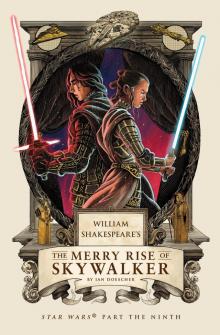 William Shakespeare's the Merry Rise of Skywalker
William Shakespeare's the Merry Rise of Skywalker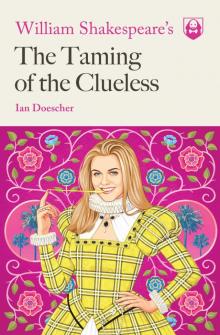 William Shakespeare's the Taming of the Clueless
William Shakespeare's the Taming of the Clueless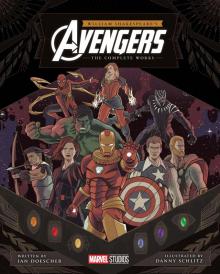 William Shakespeare's Avengers
William Shakespeare's Avengers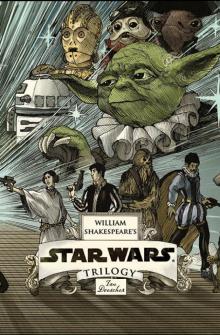 William Shakespeare's Star Wars Trilogy
William Shakespeare's Star Wars Trilogy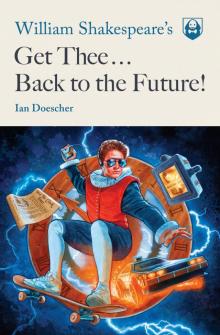 William Shakespeare's Get Thee Back to the Future!
William Shakespeare's Get Thee Back to the Future!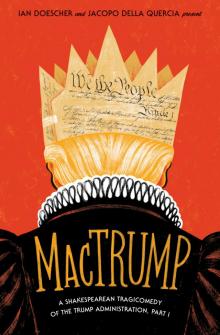 MacTrump
MacTrump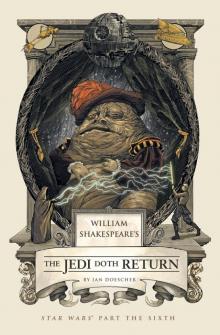 William Shakespeare's The Jedi Doth Return
William Shakespeare's The Jedi Doth Return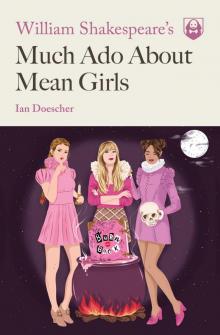 William Shakespeare's Much Ado About Mean Girls
William Shakespeare's Much Ado About Mean Girls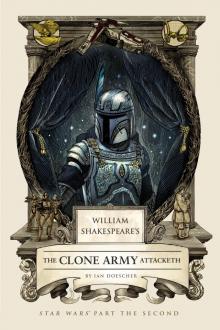 William Shakespeare's Alack! of the Clones
William Shakespeare's Alack! of the Clones William Shakespeare's the Jedi Doth Return (9781594747144)
William Shakespeare's the Jedi Doth Return (9781594747144)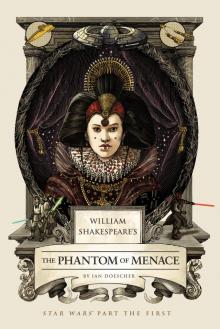 William Shakespeare's The Phantom Menace
William Shakespeare's The Phantom Menace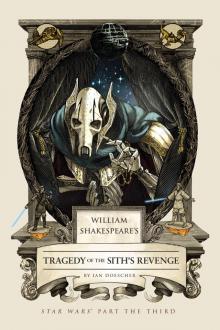 William Shakespeare's Tragedy of the Sith's Revenge
William Shakespeare's Tragedy of the Sith's Revenge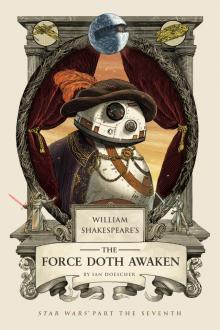 William Shakespeare’s The Force Doth Awaken
William Shakespeare’s The Force Doth Awaken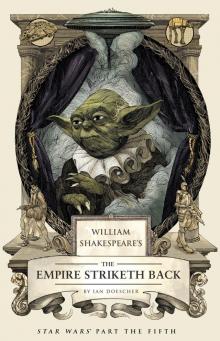 William Shakespeare's The Empire Striketh Back
William Shakespeare's The Empire Striketh Back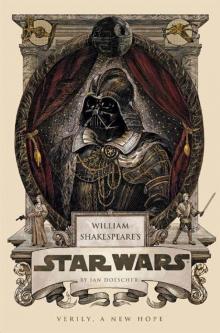 William Shakespeare's Star Wars
William Shakespeare's Star Wars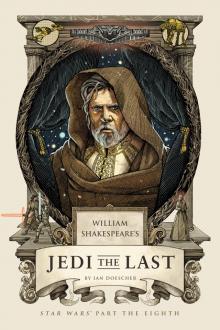 William Shakespeare's Jedi the Last
William Shakespeare's Jedi the Last